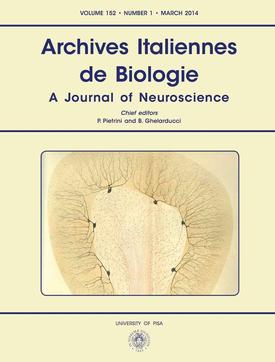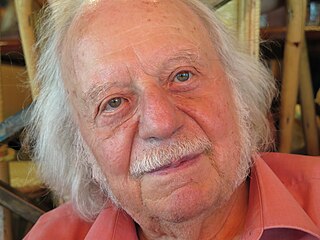Modern journal
Content from 1988 is available online in PDF format, with papers from 2005 also being available in HTML, and from 2006 in an enhanced full-text format.
The journal's 2014 impact factor was 3.506. [6] Biology of the Cell is indexed by BIOBASE, BIOSIS, CAB International, Cambridge Scientific Abstracts, Chemical Abstracts Service, Current Contents/Life Sciences, EMBASE/Excerpta Medica, MEDLINE/Index Medicus, and ProQuest Information and Learning
Articles are primarily research and reviews. Themed series on specific topics are scheduled. They were: Stem Cells (2005), RNA localization (2005), Aquaporins (2005), Synapses (2007), Cell Cycle and Cancer (2008), Microtubules, RNA regulation (2008), Microbiology and Cell Biology (2010), Cilia (2011), Endoplasmic Reticulum (2012), Epigenetics (2012), Post-Translational Modification and Virus Intracellular Trafficking (2012), Optogenetics (2014), Microvesicles and Exosomes (2015), Systems Cell Biology (2015), Translating Canceromics into function (2015).
The editor-in-chief of this journal is René-Marc Mège, a team leader at the Institut Jacques Monod. He was preceded by Thierry Galli (INSERM) who was editor from 2009 - 2017. [7]
Osborne HB. (2005) What's new for Biology of the Cell in 2005? (Editorial) Biol Cell 97: 1–2== References ==

Phillip Allen Sharp is an American geneticist and molecular biologist who co-discovered RNA splicing. He shared the 1993 Nobel Prize in Physiology or Medicine with Richard J. Roberts for "the discovery that genes in eukaryotes are not contiguous strings but contain introns, and that the splicing of messenger RNA to delete those introns can occur in different ways, yielding different proteins from the same DNA sequence". He has been selected to receive the 2015 Othmer Gold Medal.

Albert Claude was a Belgian-American cell biologist and medical doctor who shared the Nobel Prize in Physiology or Medicine in 1974 with Christian de Duve and George Emil Palade. His elementary education started in a comprehensive primary school at Longlier, his birthplace. He served in the British Intelligence Service during the First World War, and got imprisoned in concentration camps twice. In recognition of his service, he was granted enrolment at the University of Liège in Belgium to study medicine without any formal education required for the course. He earned his Doctor of Medicine degree in 1928. Devoted to medical research, he initially joined German institutes in Berlin. In 1929 he found an opportunity to join the Rockefeller Institute in New York. At Rockefeller University he made his most groundbreaking achievements in cell biology. In 1930 he developed the technique of cell fractionation, by which he discovered the agent of the Rous sarcoma, components of cell organelles such as mitochondrion, chloroplast, endoplasmic reticulum, Golgi apparatus, ribosome and lysosome. He was the first to employ the electron microscope in the field of biology. In 1945 he published the first detailed structure of cell. His collective works established the complex functional and structural properties of cells.
Protistology is a scientific discipline devoted to the study of protists, a highly diverse group of eukaryotic organisms. All eukaryotes apart from animals, plants and fungi are considered protists. Its field of study therefore overlaps with the more traditional disciplines of phycology, mycology, and protozoology, just as protists embrace mostly unicellular organisms described as algae, some organisms regarded previously as primitive fungi, and protozoa.

CUG triplet repeat, RNA binding protein 1, also known as CUGBP1, is a protein which in humans is encoded by the CUGBP1 gene.

Daphne J. Osborne was a British botanist. Her research in the field of plant physiology spanned five decades and resulted in over two hundred papers, twenty of which were published in Nature. Her obituary in The Times described her scientific achievements as "legendary"; that from the Botanical Society of America attributed her success to "her wonderful intellectual style, combined with her proclivity for remarkable and perceptive experimental findings".
Benoit Coulombe is a Canadian scientist whose research focuses on the mechanisms by which regulated protein–protein, protein–DNA and protein–RNA interactions control the activity of RNA polymerase II, the molecular machine that synthesizes all messenger RNA (mRNA) and some small-nuclear RNA (snRNA) in eukaryotes.

Biochimie is a monthly peer-reviewed scientific journal covering the fields of biochemistry, biophysics, and molecular biology. It is published by Elsevier on behalf of the Société française de biochimie et de biologie moléculaire. All articles are currently in English; previously articles in French were also published. As of March 2021, the editor-in-chief is Bertrand Friguet, succeeding Richard H. Buckingham.
Emmanuel Fauré-Fremiet, ForMemRS, (1883–1971) was a French biologist.

David L. Spector is a cell and molecular biologist best recognized for his research on gene expression and nuclear dynamics. He is currently a Professor at Cold Spring Harbor Laboratory (CSHL). From 2007 to 2023, he served as Director of Research of CSHL.

Maurice Charles Pierre Langeron was a French mycologist, bryologist and paleobotanist.

The Archives Italiennes de Biologie: A Journal of Neuroscience is a quarterly peer-reviewed open access scientific journal. Established in 1882, its publication was suspended between 1936 and 1957. It originally covered all aspects of biology, especially physiology, but now focusses on neuroscience.

Klaus Scherrer is a French biologist of Swiss nationality. He is emeritus research director for the CNRS, member of EMBO, member of the academia Europaea and the Brazilian academy of sciences. He is Professor honoris causa of University of Brasilia.

The Institute of Pharmacology and Structural Biology is a research center run as a collaboration between the French National Centre for Scientific Research and Paul Sabatier University. It has a scientific and administrative staff of 260 people, including a large number of postdoctoral workers and postgraduate students. The primary objective of the institute is the identification and characterization of novel therapeutic targets in the fields of cancer and infectious diseases.

Jean Louis Léon Guignard was a French pharmacist and botanist.
The French Crystallographic Association brings together physicists, chemists and biologists that use crystals and crystallography in their research or develop new crystallographic methods. Originally part of the French Society of Mineralogy, the AFC was founded in 1953 by Hubert Curien and André Guinier.
Daniel Louvard is a French scientist with the Department of Cell Biology in the Curie institute, Paris. In 1996 he won the Richard Lounsbery Award jointly with Jacques Pouysségur for "their contributions to the study of the regulation of cell division and differentiation."
Michel Delseny is director of research emeritus at the CNRS and a member of the French Academy of sciences.

Marcel Claude Bessis was a French physician known for research on blood cells.
François Guillemot,, is a French neurobiologist, currently working at the Francis Crick Institute in London. His research focuses on the behaviour of neural stem cells in embryos and adult brains.
Alfred Tissières was a Swiss molecular biologist, a pioneer in highlighting the role of ribosomes in protein biosynthesis and the initiator of studies on heat shock proteins synthesized by cells subjected to stress. He shared the Marcel Benoist Prize with Edouard Kellenberger in 1966.












